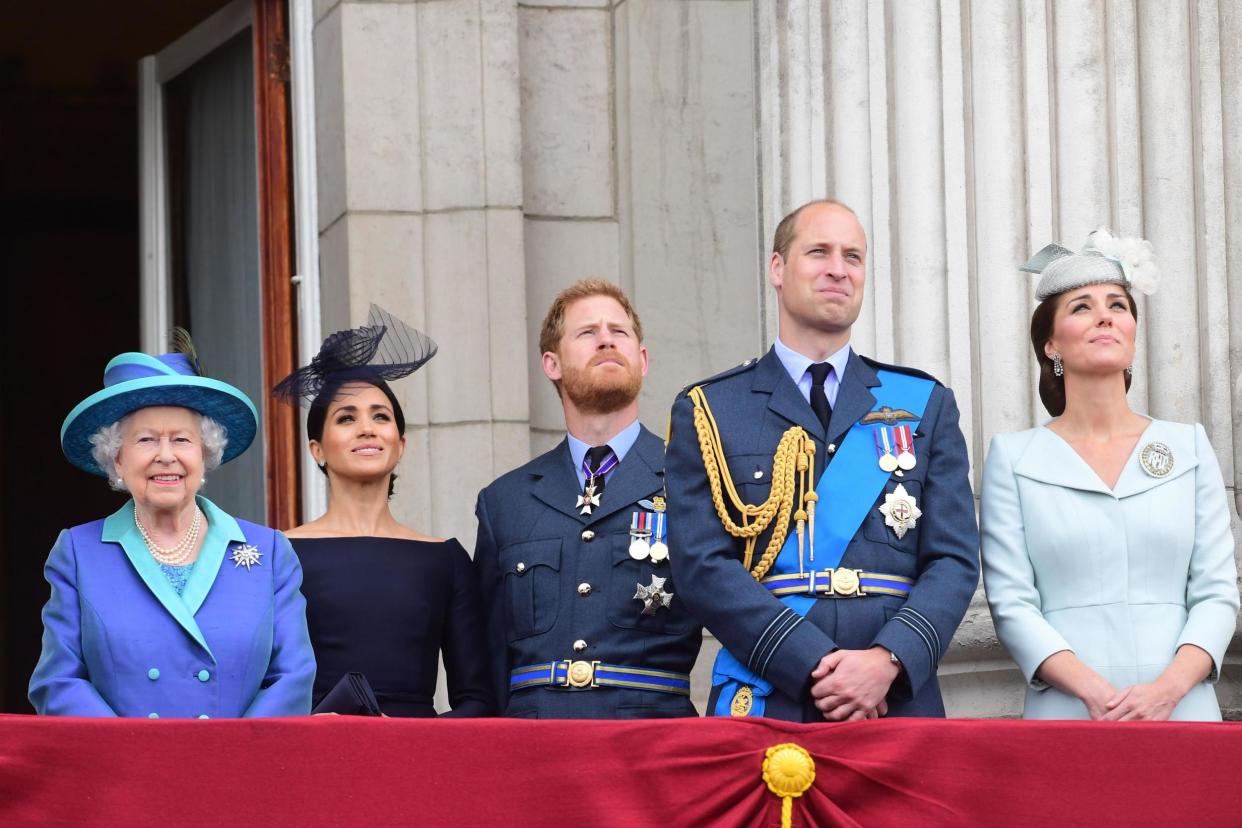Harry and Meghan's millennial oversharing is forcing the royals to be more transparent – it will be the monarchy's undoing

Rarely has a headline writer’s coinage proved as bankable as "Megxit". The parallels between the two news events are unending: a seemingly snap decision that anyone looking hard enough should have spotted a mile off; outrage from the corners of society that precipitated the crisis; an outpouring of anger that, for some, smacks heavily of racism and xenophobia.
The only difference between the UK’s withdrawal from the EU and the Sussexes’ decision "step back" from royalty is that Harry and Meghan, at least, seem to know what they are doing.
On Monday, crisis talks between the Duke and Duchess of Sussex and the rest of senior royalty concluded with a statement from the commander-in-chief. In a few dozen words, the Queen triggered her Brexit-bruised subjects with talk of “a period of transition” during which the Sussexes “will spend time in Canada and the UK” – and the nation shuddered as one.
For someone who reportedly considers “pregnant” too vulgar a term for polite company, the monarch did not mince her words. “We would,” stated the Queen, “have preferred them to remain full-time working Members of the Royal Family”. Despite affecting grandmotherly familiarity by referring not to the Duke and Duchess but to “Harry and Meghan”, the statement’s overtone was more than merely formal – it was contractual.
In a departure from the typically cryptic character of royal statements, the Queen’s was surprisingly explicit. It revealed that the main thing obliging Harry and Meghan to remain “full-time working” royals in the current roles – making them beholden to the Royal Rota and a quota of royal engagements – is not duty, but money: their reliance on "public funds”.
Of course, financial accountability is one of the defining characteristics of the modern monarchy. It was only in 1993 that the Queen first agreed to pay income tax; only in 2001 that the monarchy’s first annual accounts were published.
The Godwin’s Law of Royalty states that as a debate about the monarchy grows longer, the probability that someone will interject “YES BUT THEY BRING IN SHEDLOADS OF MONEY” approaches 1. Yet this is usually the extent of our knowledge; most of us can’t tell our Sovereign Grant from our Civil List, our Crown Estate from our Crown Land.
This ignorance is mutual. On the one hand, the royal family has divulged as little as possible about their finances; at times, deliberately obfuscated. As The Guardian argued in 2002, the year after the publication of the Royal Household’s first financial reports, “the real cost of the royal family to the taxpayer remains shrouded in confusion and secrecy ... nothing is straightforward, and much is obscured.” And the Sussexes concur: while “many of you may be familiar” with royal finances, they couple claim, they still choose to preface "The Funding" page of their new website – by far its most detailed – with their conclusion that such matters are often “misreported or quite confusing”.
Harry and Meghan want to put an end this covert culture. Integral to their attempt to carve out a “progressive new role” for themselves within the royal family is their “work to become financially independent.'' Sussex Royal’s Funding page is upfront about what that work will entail. In a handy Q&A, the Sussexes explain that they will cut the 5 per cent of their income they derive from the Sovereign Grant (whose workings they illustrate with a helpful diagram), thereby freeing themselves to earn a “professional income” – perhaps including from the “Sussex Royal” brand, which they recently trademarked for a range of goods and services, including clothing, books and “emotional support groups”.
Motivating the couple is a distinctly millennial proclivity to overshare. Harry and Meghan seem determined to modernise the monarchy, not only by working to become independent of royal finances, but by elucidating how those finances work. The Sussexes appear to believe that only by solving the mink-furred mysteries in which Britain’s most enigmatic clan is shrouded can its survival be secured.
They are sorely – though for republicans like me, happily – mistaken.
In The English Constitution (1867), the journalist Walter Bagehot observes that the monarchy should be “paraded like a pageant”, but “hidden like a mystery”. In other words, while the pomp and ceremony of royalty must be as visible as possible, its inner workings must remain “latent”. The reason that the royals have gotten away with financial furtiveness for so long is that for the most part, the public doesn’t want to know. We recognise that the power of monarchy inheres in its mystique; that to know the cost of the crown is to cheapen it.
Meghan and Harry’s resignation from senior royalty has peeled back the velvet curtain to expose the machinery of monarchy – and whetted the public’s appetite for information.
When will this “transition period” be complete? How will the Sussexes “balance their time” between the UK and North America? Are their dogs also “internationally protected people”?
Our curiosity will be the monarchy’s undoing. For if Brexit has taught us anything, the fastest way to fall out of love with an institution is to have its innards spill out before our eyes. “When there is a select committee on the Queen,” writes Bagehot, “the charm of royalty will be gone.” At this point, that doesn’t seem so far-fetched.

